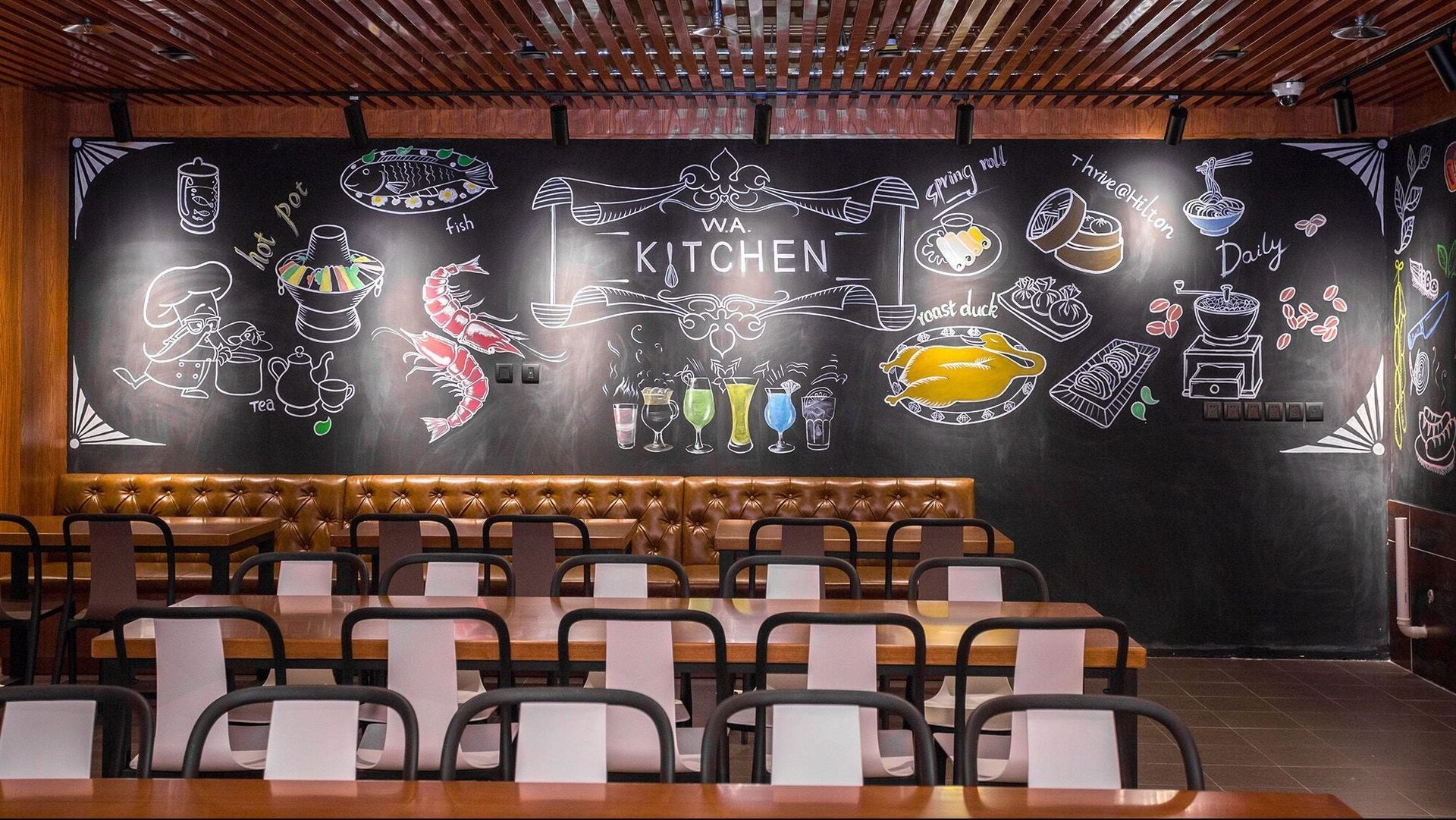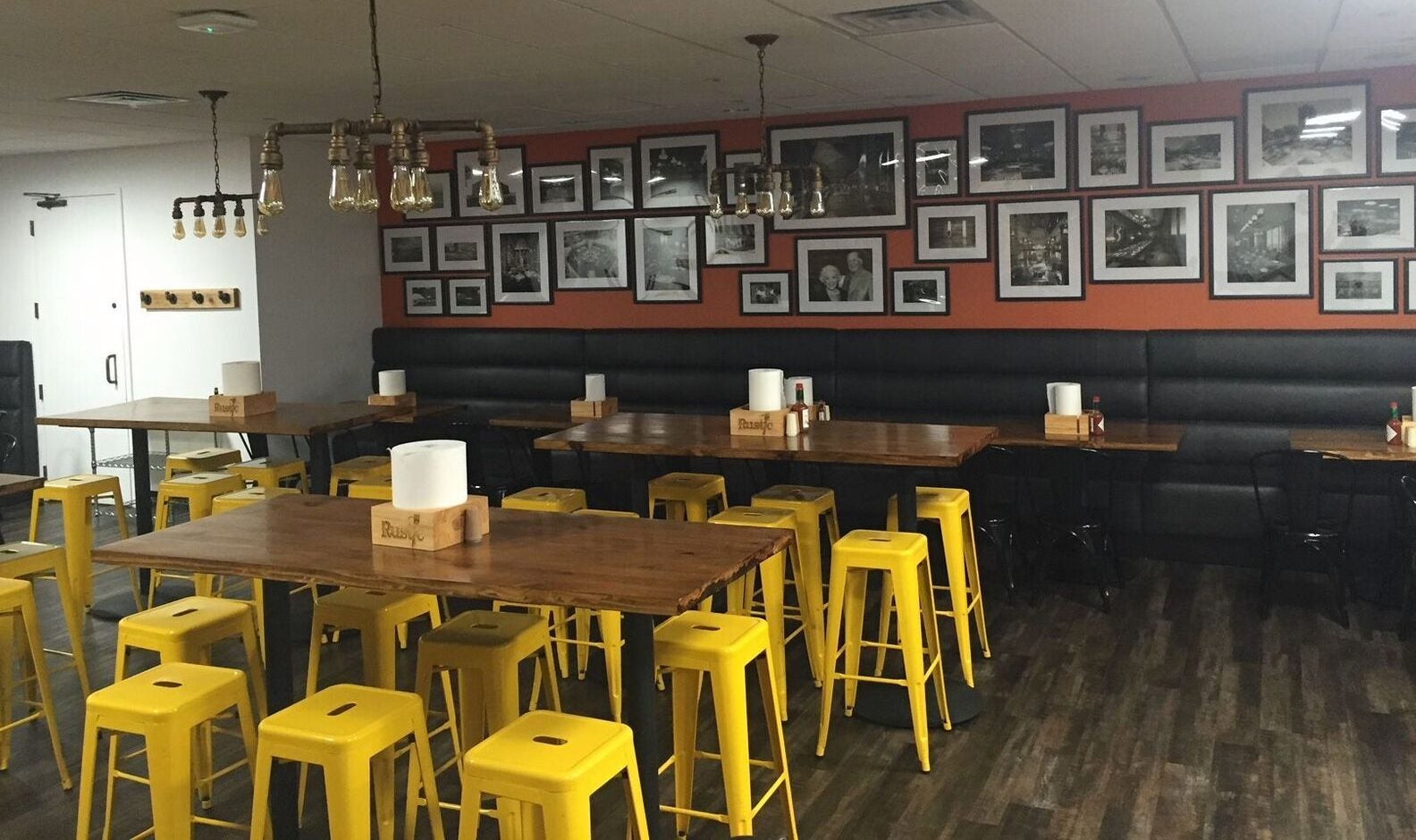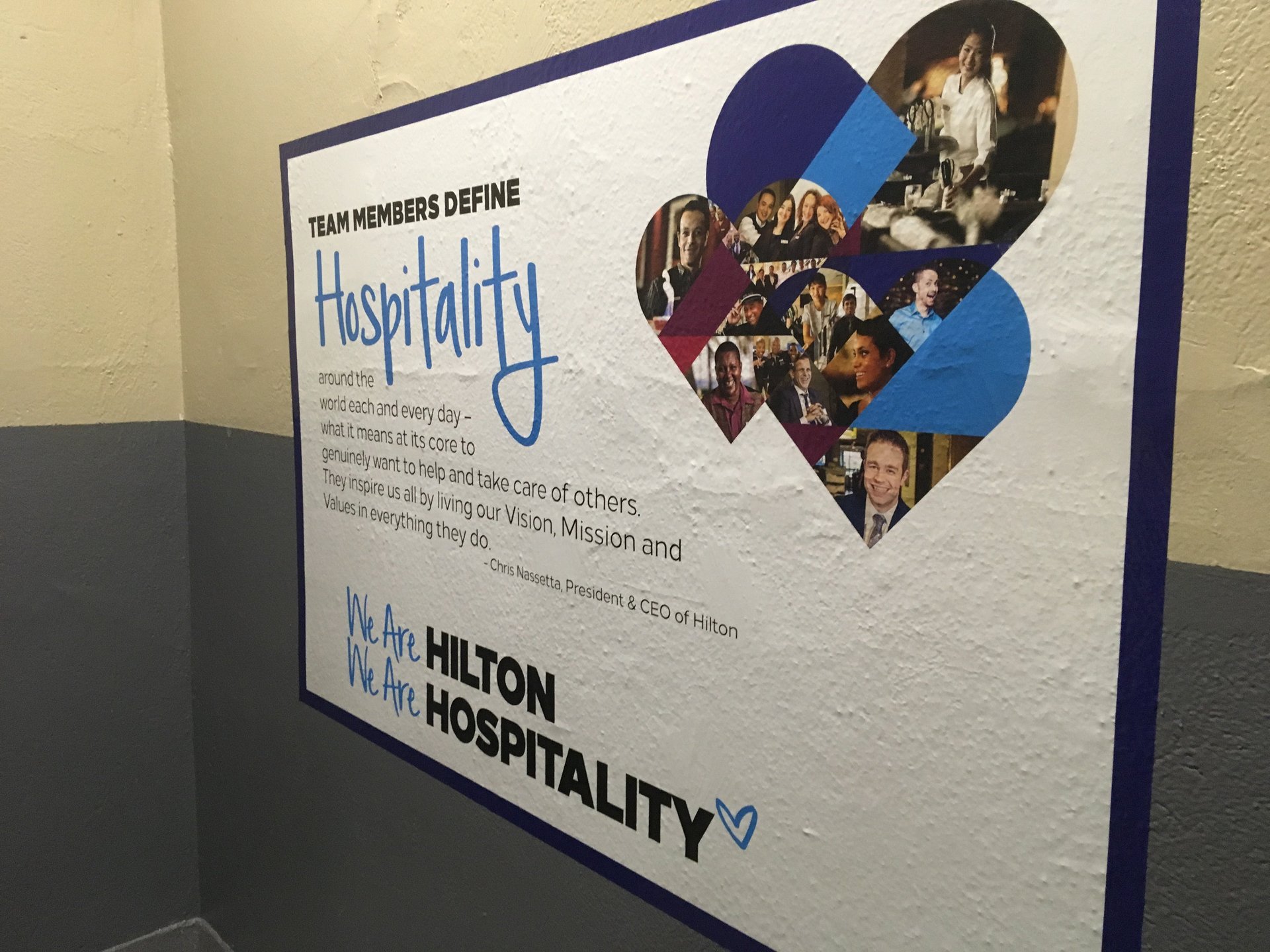Hilton Hotels’ newest upgrades are strictly for staff
Behind the graceful lobbies and elegant dining rooms of luxury hotels are the grim, windowless spaces where employees work, eat, and try to relax.


Behind the graceful lobbies and elegant dining rooms of luxury hotels are the grim, windowless spaces where employees work, eat, and try to relax.
Kitchens are chaotic, hallways are scuffed and cluttered, break rooms furnished with mismatched or broken chairs retired from guest rooms. Hotels will spend millions renovating spaces visible to the public, but the so-called back of the house is an afterthought, if it’s a thought at all.
While many companies lovingly attend to the working conditions of white-collar employees—with treadmill desks, soothing quiet rooms, and whimsical common areas—the needs of service workers are all but ignored. Hilton Hotels is attempting to rectify this imbalance with an ambitious program to spruce up its employee spaces it hopes will improve their experience and, in turn, reduce turnover, improve customer service, and drive profitability.
“Our mission is to be the most hospitable company in the world, and you can’t do that without great people, and you can’t get great people without being a great workplace,” says Matt Schuyler, Hilton’s chief human resources officer. “We can’t have a dungeonous back of house and expect people to have a great workplace.”

The upgrades—which can cost as much as $100,000 at an older hotel—range from small but obvious fixes like fresh paint and new lighting, to major projects like overhauling cafeterias and locker rooms to make them clean and inviting. They’re part of a wider package of improvements in employee wellbeing that includes expanded parental leave benefits for both salaried and hourly employees—up to 10 weeks for new mothers, and two for new fathers—and a program that offers discounted hotel stays for all employees.
So far, about 500 of the properties Hilton manages are being renovated, with another 220 to come. Eventually, the company hopes to expand these efforts to its thousands of franchised properties.
The initiatives began after Hilton’s initial public offering in 2013 (Hilton was owned by private equity firm Blackstone from 2007 to 2013), under the guidance of CEO Christopher Nassetta. Among Nassetta’s priorities were building a company culture oriented around customer service, and making Hilton an attractive destination for the thousands of employees he plans on hiring, he told Skift, a travel industry website. Improving working conditions ticks both those boxes.
The Good Jobs Strategy
Hilton isn’t the only hotel company to connect its employees’ happiness to the customer experience. Hyatt, under CEO Mark Hoplamazian, has also made investments, such as redesigning the front desks, to make life easier for both workers and guests.
Hilton and Hyatt are part of growing wave of companies recognizing that money spent on blue-collar workers should be viewed less as an expense to be eliminated, but rather an investment that can reduce costs and improve revenues. Costco, the warehouse retailer, was a prominent early adopter of what MIT lecturer and author Zeynep Ton has dubbed “the Good Jobs Strategy” and other companies have followed, including Starbucks, JetBlue, and Trader Joe’s. Even Walmart, long notorious for its low wages, has realized it needs to improve pay and working conditions if it wants to compete with Amazon.
Interventions in employee working conditions date back to the early industrial revolution. In 1812, Francis Cabot Lowell designed a textile mill, and later an entire community, in Massachusetts where young women were housed in dormitories and provided with educational and cultural opportunities (his system later fell apart under competitive pressure).
In the late 1920s, Western Electric, in Hawthorne, Illinois, hired Elton Mayo, a sociologist, to conduct experiments on worker productivity. Mayo increased the lighting, and saw worker output improve. But when he lowered the lighting, the productivity continued to increase. Ultimately, Mayo concluded that it wasn’t the actual changes that made a difference, but that workers were responding to the attention they were being shown from management.
By mid-century, less attention was paid to blue-collar employees and their workplaces, while more care was lavished on the conditions of white-collar workers, says Daniel Stokols, an emeritus professor of social ecology at the University of California Irvine. Improving the work spaces of management became a strategic initiative, he says, to foster creativity and attract employees, or as a branding exercise. ”Often, the blue-collar workforce gets the short end of the deal,” he says.
Not about nice
At Hilton, the investments in service workers are paying for themselves in the higher quality of applicants for vacancies and lower turnover, says Gareth Fox, a vice president for human resources in the Americas, who heads the initiative that Hilton calls Heart of House.
Turnover at all US properties fell 6% in 2017, saving about $30 million annually. Among millennials, a famously restless demographic, turnover in the US fell 13% last year, Fox says.
Meanwhile, scores on Hilton’s leadership index—an internal metric based on surveys about job satisfaction and trust in leadership—increased more than 7%.
Like other big hotel companies, Hilton doesn’t own most of the hotels that bear its name, but manages them on behalf of the property owners, often real estate investment trusts. That means the cost of improvements is often born by outside investors. But once they understand the payoffs, they usually get on board, Fox says.
Improved working spaces are welcomed, but they’re not a substitute for healthy wages and benefits, and adequate staffing, says D. Taylor, president of UNITE-HERE, a union that represents 13,000 US Hilton workers.
“That’s a smart investment by the company, but at the end of the day, (hotel workers) want to know how their income stacks up,” Taylor says. “You can do everything to make the work environment better, but if you can’t pay the bills and if someone gets sick and you can’t go to the doctor, that evaporates in two seconds.”
Hilton says annual wage growth averages about 5.5%, with annual merit increases and promotions. About a third of its US workforce is unionized.
Taylor, who will lead contract bargaining with Hilton this year in US cities from Boston to San Diego, says he anticipates the usual tough negotiations, but “anytime work conditions are improved, I’m fully supportive of that.”

Removing junk, adding fresh paint
Making the back of the house inviting and comfortable is considerably easier when building new hotels, where architects can design attractive spaces from the get-go, versus the rehabbing of existing properties. In older hotels, enlarged spaces for employees has to be carved from existing uses. In some cases, that means purging properties of a century of accumulated junk to reclaim storage space. At the Washington Capital Hilton, for example, workers filled 15 Dumpsters with discarded bric-a-brac, Fox says.
On a tour of the Midtown Hilton in New York—a 55-year-old property that’s also the largest hotel in the city— Fox and his team showed me what was, and what wasn’t, possible at an older structure.
The hotel’s 1,600 workers enter through a side door, and descend into the basement. The walls have been painted and adorned with bright decals, but they’re still made of cinderblocks, and the ceiling was distressingly low. When I asked if the company planned to upgrade the security guard’s station, I was told the work already had been done. More noticeable improvements were visible in the men’s locker room, which now resembles the changing room of a mid-tier health club, and to the work stations of the 19 housekeeping managers, who now have their own desks.
At another Hilton property in Manhattan, the Conrad in Battery Park City, the scuffed hallways had been covered with bright metal siding and upbeat music (Cher’s “Do you Believe in Love?” played from loudspeakers in the hallways) programmed by a company DJ. The redesigned employee cafeteria, now called a restaurant, was bright and clean with food free to employees and engineered to be healthier. It was serving Chinese food the day I visited, but bread and cold cuts for sandwiches are available everyday.

Wi-fi, uniforms and discounted rooms
Other enhancements were less visible, but arguably more meaningful for Hilton’s thousands of employees. The company rethought its policy on cell phones, and now workers are allowed to carry them as they clean rooms and carry bags, and can answer quick calls from family members. Dedicated wi-fi for employees has been installed in 468 hotels, including almost all of the US properties, which allows staff to connect on breaks and, as importantly, gets them off the guest networks.
To improve the quality of uniforms, Hilton is working with UnderArmour, which is supplying about 500,000 flexible and breathable outfits.
The company also overhauled its program for employee discounts at its 5,000-plus hotels. Called Go Hilton, it replaces a cumbersome system that had required workers to submit requests to managers. Now there’s an online reservation portal that sets aside unoccupied rooms for staff.
Employees can book up to 30 nights a year for a fee equal to the cost for cleaning a room. At the budget Hampton Inn, it’s $35 a night. Friends and family of employees are eligible for a discount of 50% off the hotel’s best rate, also up to 30 nights a year. There are additional lifetime benefits for long-tenured employees, who can take advantage of the rates even after they leave the company or retire.
Hilton unveiled the program in May 2016, and dedicated a work day to training employees to use it. So far, 845,000 friends and family have signed up and more than 5 million room nights have been booked.
In many ways, Go Hilton is typical of an investment in employees that also makes good business sense. Employees feel appreciated, and while on vacation, can observe and learn from other properties in the system. Hilton makes money on their ancillary purchases, like meals and drinks, and it drives membership into Hilton’s rewards program, which family members are required to join in order to participate.
Also, “it begets a loyalty that we might not otherwise have enjoyed,” Schuyler says. “Friends and families are saying ‘You can never quit Hilton.’”